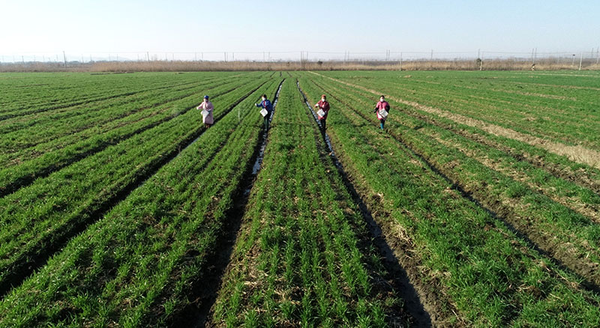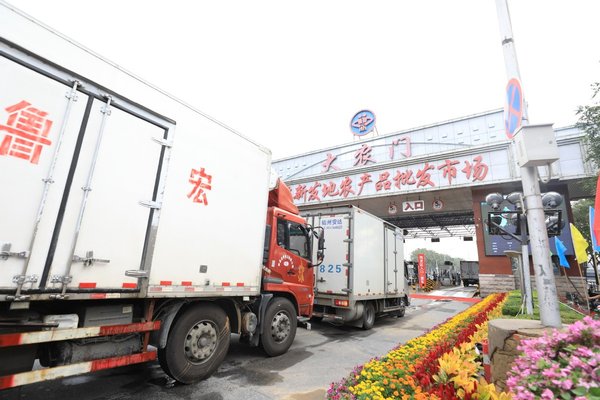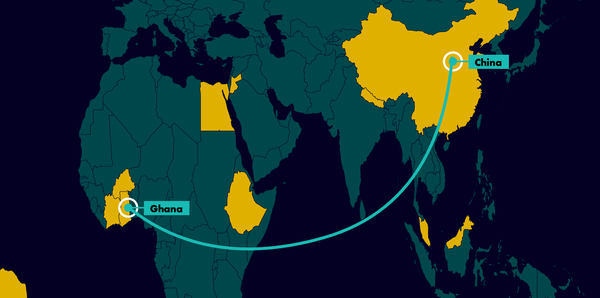
A teacher in Shijiazhuang City, Hebei Province, China explains epidemic prevention and control to students online. Photo by Wang Xiao for Xinhua News Agency. Licensed under fair use.
On the eve of the Spring Festival in 2020, COVID-19 suddenly struck. In order to fully cooperate with the prevention and control of the epidemic, the Ministry of Education of China issued the "Ministry of Education on 2020 Notice of the postponement of the spring semester". Subsequently, notices of "class suspensions" of universities, middle and elementary schools were issued throughout the country. In order to cope with "suspending classes without stopping learning", schools have adopted multiple modes to carry out online teaching work to ensure that students can complete courses at home.
In fact, online teaching is not a brand-new teaching model. With the development of the internet, online teaching models have been widely used in recent years. The development of online teaching has broken the regional barriers. It allows excellent educational resources to quickly reach all parts of the country, including mountainous areas – meaning more students can enjoy higher-quality educational resources.
But this is the first time that schools at all levels across the country have unified online teaching on such a large scale. It is a brand-new experience for most teachers and students.
Improving the learning experience of students
Compared with the traditional classroom teaching model, the online teaching model has some advantages.
From the perspective of students, first of all, the development of online teaching reflects the dominant position of students. It stimulates students' interest in learning, mobilizes students' active participation in teaching, and cultivates students' independent learning ability and innovation ability.
Second, the spatial advantage of online learning allows students to study without leaving home and have a relatively relaxed attitude in learning. This helps reduce student pressure, promote teacher-student communication, and realize students' enjoyment of learning. At a higher level, college students can choose more courses to study according to their own preferences without being restricted by other factors, such as classroom capacity.
Third, the time advantage of online learning enables students to review the content of learning after class, freely adjust the pace of learning, and leave a certain amount of time and space for their own thinking. This method consolidates students' mastery of subject knowledge and improves learning.
Does it work for teachers?
From the teacher's point of view, online platform data collection and processing analysis make the teaching process change from relying on teaching experience to objective data. Teachers can rely on data to accurately understand the learning situation. In traditional teaching classrooms, teachers should obtain classroom feedback based on students' micro-expressions and questions, and judge students' acceptance and learning based on experience. Online teaching is clear at a glance, and teaching can be arranged and adjusted in a targeted manner according to student needs.
In traditional classrooms, things such as attendance and assessment can take a lot of time. Online teaching is within a prescribed time period. Students consciously enter the classroom and teachers can clearly see the class roster. Furthermore, video learning progress, test scores, and the distribution of wrong answers can all be tracked and acquired through intuitive data. In traditional teaching classrooms, the workload of acquiring these data is obviously huge.
In addition, due to the establishment of a social platform, students and teachers can transcend time and space, and communicate with each other anytime and anywhere to achieve barrier-free dissemination of information. Teachers and students can share high-quality video resources, online learning experience and other content into the group to expand the learning breadth of other students. This kind of communication and interaction not only improves the learning effect of the course but also enriches the design of the teacher's course content and improves the teaching management and service level.
The limitations of online instruction
Some problems also arise in the process of online teaching. For example, the use of online teaching platforms often suffers from lag, or the course is not smooth due to network problems, which affects learning. Students from poor families in remote areas may not have a computer at home or are not connected to the Internet. This makes online learning very difficult for them, which also leads to inequality in education.
In addition, some teachers may not be skilled enough to navigate the many functions of the online teaching platform, which can affect their teaching abilities. Sometimes, online teaching is easily interrupted, and answering questions is not timely or clear. This gap is also not conducive to the emotional communication between teachers and students.
Online teaching may also increase poor learning effects for some students, especially for those rural poor families lacking proper digital facilities. Some reports also revealed that conflicts between children and parents are occurring across different regions, which impacts students' ability to learn.
Is a mixed teaching method the future of learning?
During the epidemic prevention and control period, the voice of "suspending classes without stopping teaching, suspending classes without stopping learning" gave birth to a new wave of online education. It also put China's cloud services to the test when they were caught off guard by the switch to online learning.
Although there are still some problems with online teaching, it is undoubtedly the best choice under the epidemic, allowing students to study normally under special circumstances. At present, China’s primary schools, middle schools, universities and other institutions at all levels have fully opened, and students have returned to campus. However, I still hope that educators use the advantages of online teaching in the future by promoting the "offline teaching + online teaching" mixed teaching method. This allows teachers to complete teaching tasks efficiently and with high quality as well as innovate and enrich the practice of teaching activities.
There are still some problems with online teaching, and some students from poor families may find it difficult to conduct online learning normally. But in general, online teaching is still the best choice under the COVID-19 epidemic, which can enable most students to be able to learn under special circumstances.



